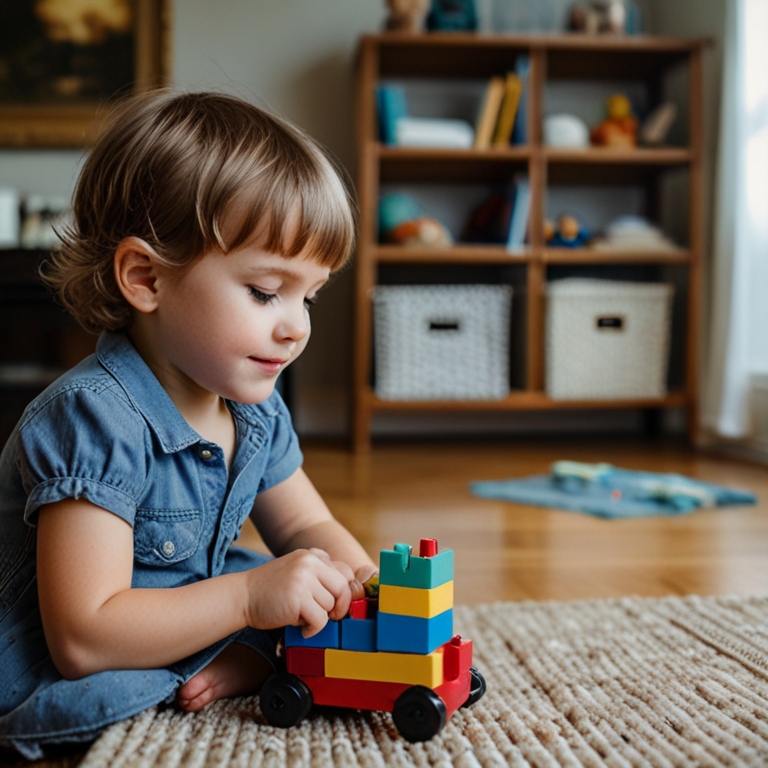Parenting in today’s world often feels like a whirlwind of stuff. From overflowing toy boxes to endless birthday party favors, it seems like childhood has become synonymous with clutter. But what if you could raise happy, well-adjusted kids with less? What if fewer toys meant more imagination, fewer gadgets meant more conversation, and a less crowded home meant a calmer life? That’s the heart of Minimalist Parenting & Family Life, and it’s a philosophy that’s transforming modern households.
Let’s explore how to cultivate meaningful family moments through simplicity, intentionality, and mindful living.
Table of Contents
The Case for Minimalist Parenting
What is minimalist parenting, really? It’s not about depriving your kids or stripping away joy. In fact, it’s the opposite. Minimalist parenting is about clearing out the excess to make room for what truly matters: time, connection, creativity, and peace. Imagine parenting like tending a garden. You pull the weeds (clutter and noise) so your flowers (your kids) can thrive.
Psychologist Dr. Kim John Payne, author of “Simplicity Parenting,” explains, “Too much stuff, too many choices, and too much speed is overwhelming for children.” He argues that children need rhythm and simplicity to feel secure and flourish.
In a world where marketing is king and consumer culture targets kids from toddlerhood, minimalist parenting stands as a radical act of love and awareness. It empowers you to choose slow over busy, simple over flashy, and connection over chaos.
Consider this anecdote: A mother from Portland, Oregon, once shared how she decluttered her five-year-old’s room, keeping only a handful of open-ended toys. To her surprise, her son played longer and with more focus than ever before. “He started building cities out of blocks and narrating stories that lasted for hours,” she said. “It was like watching his imagination bloom.”
Redefining “Enough” for Your Family
One of the first hurdles in minimalist parenting is redefining what “enough” looks like. We live in a society where more often means better, and it can be hard to step away from that mentality—especially when it comes to our kids. Are they missing out if they don’t have the latest educational gadget or 50-piece toy set? Not at all.
Let’s shift the focus. Instead of asking, “Do we have enough?” ask, “Do we have what matters most?” Think of your home like a backpack. You want to fill it with the essentials, not with heavy items that slow you down. When your family embraces “just enough,” you create breathing room—literally and emotionally.
One strategy is to create family values around spending and gifting. For example, “We value experiences over things,” or “We believe in saving for meaningful adventures.” These become your guiding compass for purchases, birthday gifts, and even holiday traditions.
And remember, your children take their cues from you. If you value simplicity, they will too. A parent from Toronto shared how her family adopted a “one in, one out” rule—any time a new toy entered the house, one had to be donated. It taught her kids the beauty of balance and generosity.
Decluttering Toys: Quality Over Quantity
Toys are often the biggest culprits of kid-related clutter. It starts with good intentions—gifts from relatives, educational tools, bargain buys—but quickly turns into a mountain of plastic. The irony? Kids often play with just a few favorites, ignoring the rest.
Studies show that fewer toys can actually benefit child development. A 2018 study by the University of Toledo found that toddlers played more creatively and for longer periods when they had access to fewer toys.
So how do you declutter effectively?
- Sort into categories: Keep open-ended toys like blocks, dolls, and art supplies. These encourage creativity and problem-solving.
- Rotate toys: Store some away and switch them out monthly. This makes old toys feel new again.
- Involve your child: Teach them to choose what they love and let go of what they don’t. This builds decision-making skills and a sense of control.
One minimalist mom said, “I was shocked at how excited my kids were to donate. Once they understood that someone else would love the toys they no longer played with, it became a family mission.”
Decluttering isn’t just about less stuff. It’s about more time, more space, and more imagination.
Mindful Spending on Kids’ Essentials
Minimalist parenting doesn’t mean you never buy anything; it means you spend intentionally. When it comes to kids’ essentials—clothes, school supplies, gear—it’s tempting to go overboard. But mindful spending is like grocery shopping with a list: you stick to what you need and avoid the impulse buys.
Here are a few tips for spending smart:

- Buy fewer, better: Invest in quality over quantity. A few well-made clothes outlast dozens of cheap items.
- Secondhand treasures: Consignment shops, swap groups, and thrift stores offer budget-friendly and eco-conscious options.
- Set limits: Give kids a monthly budget or “wishlist” window. This teaches money skills early on.
One family we interviewed adopted a “capsule wardrobe” approach for their kids. “We keep about 10 core items per season, and everything matches,” the dad said. “It’s made mornings easier and cut our clothing budget in half.”
Mindful spending also extends to birthdays and holidays. Focus on meaningful gifts—books, a trip to the zoo, or a cooking class together—rather than mountains of toys. Your kids won’t remember every gift, but they will remember how you made them feel.
Creating a Meaningful Family Routine
Minimalist parenting shines when you apply it to your family routine. Instead of packing your days with activities, think about what matters most to your family and build your schedule around those priorities.
Start with anchors: meals together, bedtime stories, outdoor play. These become your daily rituals, grounding your family and offering moments to reconnect.
In many minimalist households, routines are seen not as strict rules but as supportive rhythms. Think of your day like a song. Without rhythm, it’s just noise. With it, you create harmony.
One mother from Austin, Texas, shared how her family implemented “Slow Sundays,” a day with no screens, no errands, and no obligations. “We just hang out, bake muffins, read books, or take a walk. It’s our favorite day of the week.”
Creating a meaningful routine also means cutting what doesn’t serve your family. That might be too many extracurriculars or digital distractions. Less hustle, more hugs.
The Role of Space in Childhood Development
Our environments shape us—especially kids. A cluttered, chaotic home can lead to overstimulation, stress, and even behavioral issues. Minimalist spaces, on the other hand, foster calm and focus.
Think of your home as a canvas. When it’s clear, your child becomes the artist. A well-organized space invites creativity, independence, and learning.
To create child-friendly minimalist spaces:
- Designate zones: Have clear areas for play, reading, eating, and sleeping.
- Keep surfaces clear: Reduce visual noise to help your child focus.
- Use accessible storage: Bins at kid height empower them to clean up independently.
One expert, interior designer and mom Tara Button, says, “Every item in a child’s space should either serve a purpose or spark joy. Otherwise, it’s just noise.”
Minimalist homes don’t have to be sterile. Think cozy nooks, warm lighting, and a few well-loved toys or books. The goal is to create a space where your child feels safe, calm, and inspired.
Simplifying the Family Schedule
Overbooking is a modern epidemic. Ballet, soccer, playdates, music class—it can leave everyone frazzled. Minimalist parenting encourages you to slow down and be intentional with your time.
Ask yourself: Does every activity add value? Are we doing this because we enjoy it or because we feel obligated?
Use a simple time-blocking method:
| Time Block | Activity Type |
| Morning | Personal prep + breakfast |
| Afternoon | Outdoor play / quiet time |
| Evening | Family dinner + story time |
Prioritize unstructured play and downtime. These moments help kids process emotions, build creativity, and develop resilience.
An anecdote from a Minnesota dad highlights this: “We cut back to just one activity per season per child. At first, we worried they’d be bored. But now, we have more time to explore together, and our evenings are way less stressful.”
The key is balance. A full life isn’t a packed calendar—it’s one rich in meaning.
Raising Grateful and Resourceful Children
Minimalist parenting isn’t just about stuff; it’s about values. When you raise kids with less, you give them more opportunities to appreciate what they have and to think creatively.
Gratitude is a muscle. You build it through practice. Try these ideas:
- Gratitude jars: Each night, write down one thing you’re thankful for.
- Volunteer together: Helping others fosters empathy and perspective.
- Model thankfulness: Say thank you often—to each other, to nature, to everyday blessings.
Resourcefulness comes from solving problems and making do. One mom shared how her daughter turned a cardboard box into a “rocket ship” and played with it for weeks. “She learned more about physics and storytelling from that box than from any toy,” she laughed.
When kids aren’t handed everything, they develop resilience, creativity, and confidence. That’s the magic of minimalist parenting: it invites your kids to shine with what they already have.
Conclusion: The Joy of Less in Family Life
Minimalist parenting isn’t about rules or restrictions. It’s about freedom. Freedom from clutter, chaos, and consumerism. Freedom to focus on what really matters—your relationship with your children, your time together, and the values you want to pass on.
As the saying goes, “Children spell love: T-I-M-E.” And when you raise kids with fewer distractions and more intention, you give them the gift of presence.
So go ahead. Clear the clutter. Skip the latest toy trend. And create a home where love, imagination, and connection have room to grow.
FAQs
How do I start minimalist parenting if my house is already full of toys? Start small. Pick one area, like a toy shelf or a single bin. Involve your child in choosing what to keep and what to donate. Focus on progress, not perfection.
Won’t my child feel left out without the latest toys or gadgets? Kids adapt quickly. When you prioritize experiences and creativity, they find joy in simpler things. Friends and family will also understand if you explain your values.
How do I handle holidays and birthdays with extended family? Communicate your goals clearly. Suggest experience gifts or a group contribution toward one meaningful item. Share a wishlist to guide them.
What if my partner isn’t on board with minimalist parenting? Start with small wins. Show the benefits through reduced stress and happier kids. Open dialogue and shared values can help bridge differences.
Is minimalist parenting realistic with multiple kids? Absolutely. It may require more coordination, but the core principles—intentionality, simplicity, and connection—are even more valuable in a busy household.

